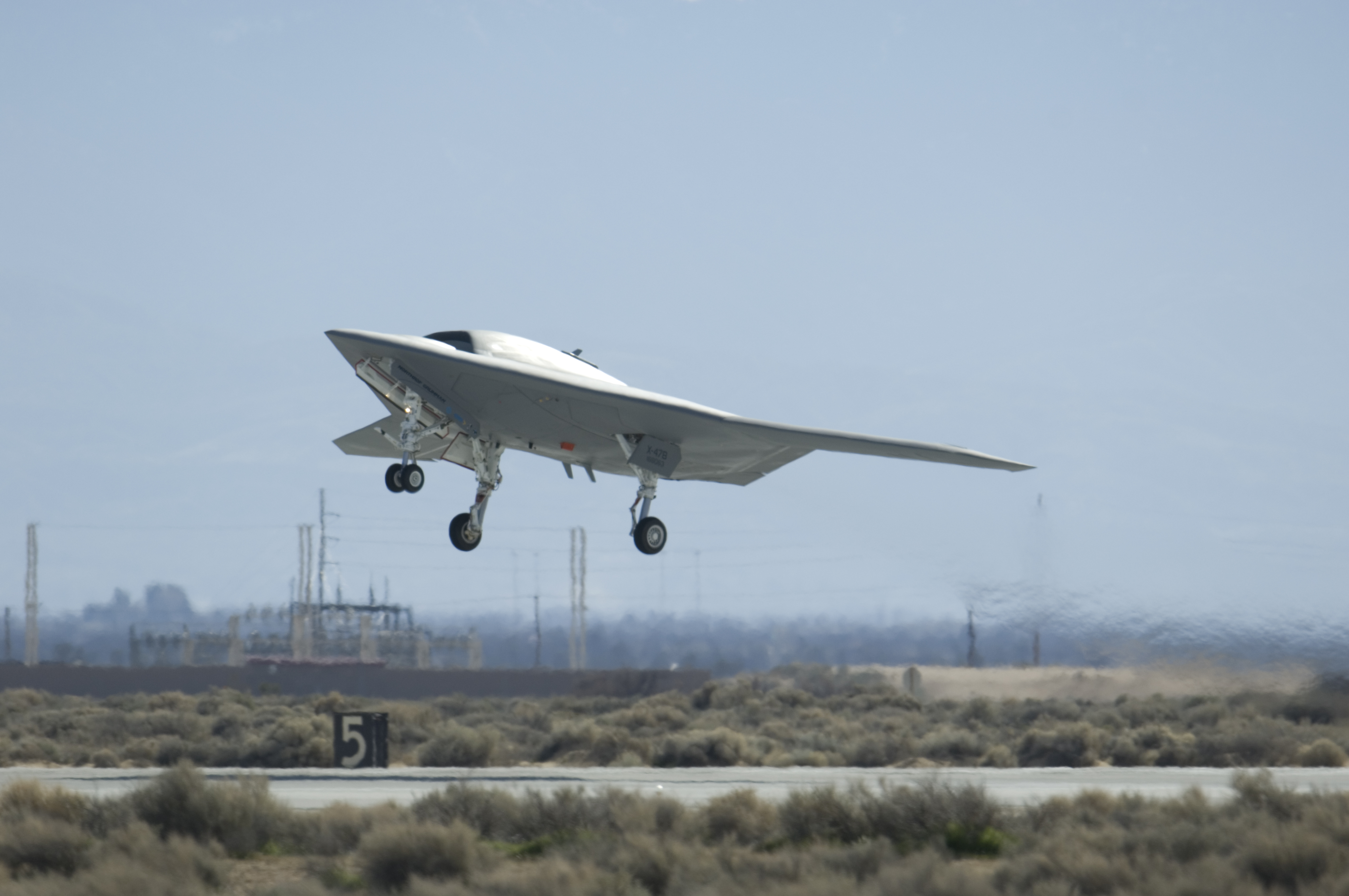Super drone lands on aircraft carrier


The United States Navy has successfully landed an experimental Northrop Grumman fighter drone on an aircraft carrier.
Northrop Grumman's X-47B touched down on the USS George H.W. Bush off the coast of Virginia today, the AP reports. The drone's landing is a first in aviation history and is considered to be a difficult maneuver. It also signals a broadening role for drones in warfare beyond routine surveillance and targeted bombing missions.
The X-47B and drones like it will have far more robust specifications than the military's controversial Predator drones. The prototype reaches a maximum altitude of 40,000 feet, has a range of over 2,000 nautical miles, refuels during flights, and can carry a payload of 14,000 pounds, the AP reports. The Predator drone can carry a maximum load of 1,100 pounds, and its range is limited to 675 nautical miles.
Drones based on the X-47B design are expected to enter service by 2019 under the military's Unmanned Carrier-Launched Surveillance and Strike (UCLASS) program. Boeing, General Atomics and Lockhead are all building competing aircrafts. Consider this to be the "horse and buggy" days of drones.
It makes perfect sense for human pilots to be removed from future military aircraft as drone technology advances. Designing an aircraft around a person is much more expensive, limits speed and maneuverability, and requires costly training. A drone fleet would be more cost-efficient and be produced in greater numbers and much more rapidly than it would take to test and deliver manned fighters.
Recall how the F-35 Joint Strike Fighter has become the most expensive fighter jet ever made. The program has been an historic Pentagon boondoggle, plagued by massive cost overruns, delays, and technical failures. The F-35 program has cost U.S. taxpayers over US$84 billion, and is estimated to cost $1.5 trillion over the course of the next 55 years to develop, fly, and maintain.
The economics of drones, which are less complicated to manufacture, is evident by comparison (even though the X-47's budget also ballooned past its initial projected funding as many contracts do). The Pentagon has had many, many "Solyndras," far eclipsing the money wasted on the failed solar panel maker.
The elevation of drones to roles once filled by humans raises questions.
Will the next generation of "aces" be machines, and who will be held accountable for lethal actions when military aircraft are fully autonomous?
(image credit: U.S. Air Force/Rob Densmore)
Related on SmartPlanet:
- Drone deployed to catch graffiti artists in the act
- Forget pets: have a drone follow your footsteps
- Drones help utilities keep the lights on
- Drones will produce 70,000 new jobs
- Will drones replaces the pizza delivery guy?
- Silicon Valley investor raises funds to bring drones to the masses
- Artist envisions drone proof city
- Meet Pakistan's drone maker
This post was originally published on Smartplanet.com